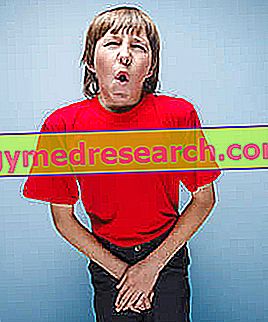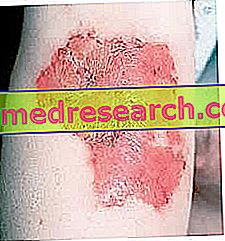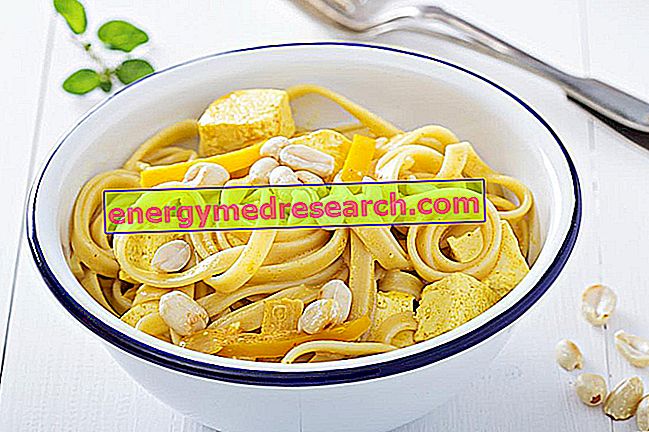Generality
Cystitis in children is an inflammatory disorder that can occur in both very young children and school-age children. This disorder is characterized by inflammation of the bladder wall, generally due to a bacterial infection.

Epidemiology
Cystitis - and more generally urinary tract infections - can affect both infants and young children as well as school-age children.
As in the case of adults, even in pediatric patients the incidence of cystitis appears to be greater in female individuals rather than in males, especially when over four years of age.
Causes
As mentioned, cystitis is an inflammatory disorder caused by a bacterial infection, sustained in most cases by Gram-negative bacteria (such as E. coli, K. Pneumoniae, etc.), but which can sometimes be supported also by Gram bacteria -positives (such as staphylococci and streptococci).
The causes that can trigger the aforementioned bacterial infection can be of different origins and nature, and can contribute to the etiology of this disorder. Among these, we recall:
- Abnormalities in urinary tract function;
- Malformations and alterations in the structure of the urinary tract, including the kidneys;
- Presence of vesico-urethral reflux;
- Diabetes;
- Urinary tract obstructions;
- Use of bladder catheters;
- Lowering of immune defenses;
- Poor personal hygiene;
- Use of aggressive detergents.
Symptoms and Complications
The symptoms of cystitis in children can vary greatly depending on the age of the patient.
In infants and very young children, cystitis can manifest itself with rather generic signs and symptoms, such as irritability, loss of appetite, vomiting, lethargy and apparently unexplained fever.
In children over the age of two, instead, cystitis usually presents with symptoms very similar to those experienced by adolescents and adult patients. These symptoms include:
- Increase in the number of micturitions during the day (pollakiuria);
- Urination difficulties;
- hematuria;
- pyuria;
- Urinary retention;
- Pain and / or burning during urination;
- Bladder tenesmus;
- Turbid and foul-smelling urine;
- Nocturnal enuresis (if the child already uses the bathroom).
However, sometimes it can happen that cystitis in children is asymptomatic and that it is diagnosed randomly during normal routine examinations.
However, if not timely diagnosed and / or if not properly treated, the infection that caused the cystitis could expand and reach the genital tract and the upper urinary tract. In the latter case we speak of pyelonephritis.
Therefore, if the child has any of the symptoms mentioned above, it is essential to immediately contact your pediatrician or your doctor.
Diagnosis
The diagnosis of cystitis in children is usually made through the analysis of symptoms (which, if the children are very small, will be described by the parents to the doctor) and through urinalysis.
The urine sample must be taken with appropriate modalities and then it will be subjected to specific tests, aimed at determining the bacterial contamination both from a quantitative point of view (in order to verify the effective presence of an infection), and from a qualitative point of view (so as to be able to implement the most suitable therapeutic strategy to eradicate the microorganisms responsible for the infection).
Pharmacological therapy
Usually, cystitis in children is a disorder that resolves easily and rather quickly by following the right therapy.
Since this disorder is caused by a bacterial infection, its treatment involves the administration of antibiotic drugs.
The active ingredients most commonly used for the treatment of cystitis in children are penicillins, such as amoxicillin (Zimox®) and ampicillin (Amplital®), and cephalosporins, such as cefixime (Cefixoeal®).
Usually, it is preferred to use these drugs orally, but if this is not possible, the doctor may consider administering the drug parenterally.
The dose of antibiotic to be administered for the treatment of cystitis in children varies according to the body weight and the age of the patient. Therefore, it will be the doctor who establishes - on a strictly individual basis - both the exact dosage of the medicine and the type of antibiotic drug that each child will have to take.
If the child also has a high fever, the doctor may decide to administer antipyretic drugs such as paracetamol (Tachipirina ®).
Finally, in the most serious cases, the doctor may consider it necessary to admit the child to the hospital, within which all the appropriate examinations will be carried out and the most suitable pharmacological therapies will be established.
Prevention
In most cases, prevention may be sufficient to prevent the onset of cystitis in children. In fact, following simple and common indications, the development of the bacterial infection responsible for this annoying disorder can easily be hindered.
In this regard, we generally recommend:
- Change the diaper frequently, so as to avoid the spread and proliferation of bacteria that could be responsible for the onset of cystitis;
- Educate children about proper personal hygiene;
- When carrying out the daily intimate hygiene of the child, avoid using aggressive detergents;
- Educate children so that they do not hold urine too long;
- In children who no longer wear a diaper, avoid using underwear made with synthetic fibers and prefer cotton underwear.



